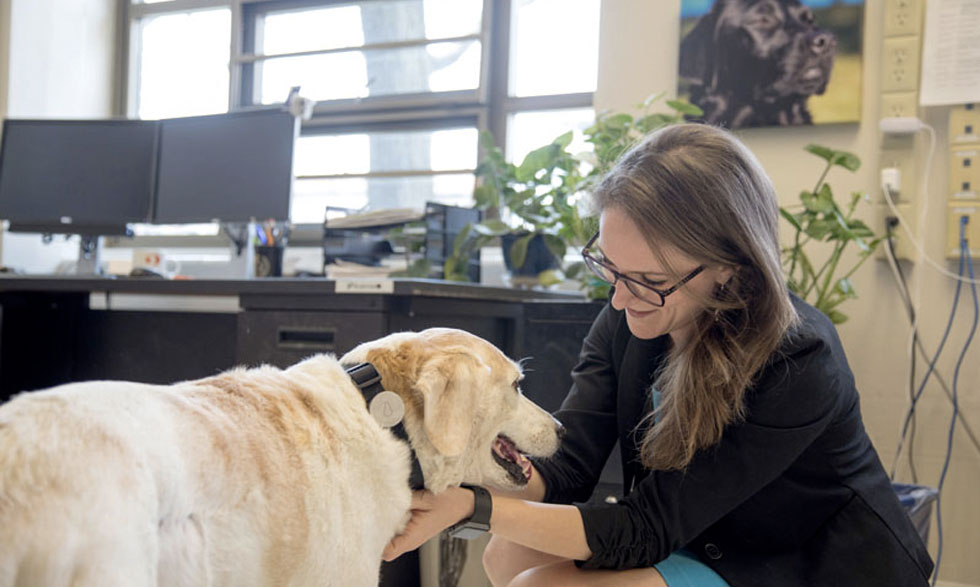Guinea pigs, fish, dogs, and horses: What do these animals have in common? They may have an impact on our health.
Since 2008, NIH has studied how these animals affect our health—from reducing anxiety to helping us remember to take medicine.
"People have been interested in human-animal interaction for hundreds of years but the science has only started blossoming in the past few decades," said Layla Esposito, Ph.D. "There are a lot of stories about the relationships between humans and pets, but there are still a lot of unanswered questions."
Dr. Esposito and her team are trying to answer those questions. She oversees the human-animal interaction research portfolio at the Eunice Kennedy Shriver National Institute of Child Health and Human Development (NICHD).
What we know
Although trials may help uncover or confirm health benefits from our pets, there are some things we already know. For example, animals can bring people companionship and help us get more physical activity.
"We know that when you're playing with a dog or taking it for a walk, you're obviously increasing physical activity," Dr. Esposito said.
Stress and anxiety
Another popular area of human-animal interaction research looks at how pets can reduce stress and provide emotional support.
Marguerite E. O'Haire, Ph.D., and her team at Purdue University are funded by the program. They studied if playing with guinea pigs in the classroom helps children with Autism Spectrum Disorder feel calmer and more engaged in social interactions. Their findings? They do.
Now Dr. O'Haire is exploring how service dogs can help veterans. Specifically, how dogs can improve the quality of life for veterans and their families who suffer from post-traumatic stress disorder following military service.
"Through my NICHD grants, it has been exciting to capture data on areas that have historically relied on emotional intuition rather than objective science," Dr. O'Haire said.
Safety first
The human-animal interaction program studies more than just health. The program also looks at the safety of human and animal participants.
One ongoing study wants to see if dogs can reduce stress, loneliness, and anxiety in children with cancer. Researchers also want to know if the dogs compromise the children's immune systems during these visits.
"It could open up the doors for hospitals to start letting therapy dogs onto cancer wards, which would be really exciting," Dr. Esposito added.
NIH's Clinical Center—the country's largest research hospital—already uses therapy dogs to comfort some patients during their stays.
Other animals
In addition to dogs and guinea pigs, NIH research has studied how riding horses can help children with developmental disabilities. It's also researched how feeding fish on a set schedule helps teens to better manage their type 1 diabetes.
Dr. Esposito said she hopes to see more research on our favorite feline friends, cats, since they are popular pets.
Becoming a human-animal interaction researcher
While human-animal interaction research is expanding, it's still a unique, smaller field.
Dr. O'Haire has one of the few research positions in the country solely dedicated to studying how animals interact with humans.
"I have always been interested in studying both animals and psychology, so this field is the perfect intersection of those interests," she said. Her advice for young people interested in this or other research careers: find a mentor.
"I would recommend finding a mentor. Whether the mentor is focused on human-animal interaction or related fi elds, mentorship can be critical to navigating the pathway to successful career development," Dr. O'Haire said.







